What if your next day of training was in a lab with virtual reality goggles on? Or was condensed into a session that lasted just 15 minutes? Or was tailored to you uniquely? New trends are transforming learning by incorporating technology—with massively engaging results.
In the past decade, the desire to build personal knowledge and new skills has shifted how employees view training, turning a once-mandatory drudge into a true perk. But it’s got to be done well.
In this issue, we take a look at the learning trends shaping the future of training, how training can be used to help employees reach professional goals, and the growth of emotional intelligence and other so-called soft skills that have strong ties to job performance.
What are you hoping to learn this year? Continue the conversation and share your thoughts or questions about training.
Edward Tuorinsky
Managing Principal
DTS
Edward.Tuorinsky@consultDTS.com
571.403.1841
5 Trends Transforming the Way We Learn
 Ongoing training can infuse your team with energy and new ideas. New trends in learning help to develop the critical skills HR is looking for AND capture the interest and attention of employees—both through the innovative use of technology. While the term ‘trends’ makes them sound fleeting, we are happy to report that solid research backs each as they become the foundation for the future of training.
Ongoing training can infuse your team with energy and new ideas. New trends in learning help to develop the critical skills HR is looking for AND capture the interest and attention of employees—both through the innovative use of technology. While the term ‘trends’ makes them sound fleeting, we are happy to report that solid research backs each as they become the foundation for the future of training.
Spaced Learning
We learn best when we have a series of short learning sessions—think 20-minutes of study, followed by 10-minutes of a related activity applying the knowledge. This technique is particularly useful for breaking complex or technical material into small bites, while repetition helps with retention.
Post-Truth Learning
This type of learning helps counteract the impact of social media and fake news by encouraging learners to ask questions about the knowledge. Learners are given the tools to determine objectivity, subjectivity, rationality and truth—a more critical, analytical approach to information gathering.
Immersive Learning
Experiences engage multiple senses and therefore are more impactful, more memorable. This technique incorporates augmented reality, virtual reality, mixed reality, and other immersive, realistic scenarios in which learners actively participate, engaging them in new ways while they organically absorb new knowledge. Immersive learning is ideal for trying new skills without risk, like learning to handle an angry customer, changing out a part on machinery, or even learning a new flight system.
Learner Analytics
Using algorithms, this trend makes learning personal. A program or a series of assessments are used to determine the best, most targeted learning path for each individual. The data can identify goals and ambitions, existing knowledge and gaps, and identify the best way for that person to acquire new information.
Humanistic Knowledge-Building Communities
This approach promotes the development of knowledge individually and collectively. It focuses on helping people to be creative, self-directed and open to experiences while also enhancing and sharing knowledge with their larger community, be it a project team or an organization. In practice, this technique can boost confidence, collaboration and connections for smarter, more resourceful groups.
To hear more about how these trends translate into tailored learning programs, contact DTS. One of our training experts can discuss your needs and recommend a program that can achieve your desired objectives.
Hitting Performance Goals Through Training
Training can be used to keep employees up-to-date on changing job requirements, changing industry trends, technologies or skills, and even changes within your organization. The best learning experiences make the connection between new information and performance goals, extending to how employee performance impacts organization goals.
Research shows linking specific training and performance goals is a powerful motivator. Employees tend to view the learning as an opportunity instead of a requirement, and become more active participants in the training process because they see the value. Providing opportunities to apply newly acquired knowledge on-the-job further reinforces that learning is essential to the job.
In a recent article, TrainingZone notes that the connection to goals influences training picks, including programs that have multi-generational appeal, that offer different delivery methods to appeal to different kinds of learners, and allow for more experiential learning. Read the entire article.
Are We Still Calling Them Soft Skills? The Real Value of Emotional Intelligence
 Emotional Intelligence, a term coined in the 90’s, refers to the capacity to perceive, process and regulate emotional information accurately and effectively in yourself and others. It’s often grouped with communication, cooperation and negotiation skills at work. These traits, formally called soft skills, have gained appreciation by employers who understand that intelligence alone doesn’t guarantee success. And complementary skills to work cohesively within teams, deal with change, and manage stress, are needed to pursue business objectives. Also, while IQ is generally fixed, emotional intelligence (EI) can be developed and grown—yielding significant benefits, from personal happiness to elevated success.
Emotional Intelligence, a term coined in the 90’s, refers to the capacity to perceive, process and regulate emotional information accurately and effectively in yourself and others. It’s often grouped with communication, cooperation and negotiation skills at work. These traits, formally called soft skills, have gained appreciation by employers who understand that intelligence alone doesn’t guarantee success. And complementary skills to work cohesively within teams, deal with change, and manage stress, are needed to pursue business objectives. Also, while IQ is generally fixed, emotional intelligence (EI) can be developed and grown—yielding significant benefits, from personal happiness to elevated success.
What might EI do for your employees?
People with higher EI tend to perform better than those with lower EI in life overall, regardless of IQ.
- EI is an integral part of forming and developing meaningful human relationships.
- Leaders with an aptitude for self-regulation, part of EI, are far less likely to be aggressively confrontational and make snap decisions.
- Higher levels of emotional intelligence result in greater resilience and less chance of ‘burnout’ or depression.
The link between emotional intelligence and job performance not only exists but has value in myriad areas, from communication and relationships to stress and change management, to decision-making skills. Learn more about EI and performance as you plan and prep for the new fiscal year.
Gamification and Training
Gamification is a popular update to online training. In a survey conducted by Talent LMS, 80% of the participants said they would be more productive and motivated if their learning environment was more like a game. Learn more at the LMS Stats page.

DTS in the News
DTS is proud to be recognized by the Washington Business Journal’s 13th annual Best Places to Work program. We were named among 100 Greater Washington companies based on survey responses from employees themselves, rather than a panel of outside judges. Asked about the honor, Ed Tuorinsky said,
“We take great pride in having a diverse workforce that celebrates multiple perspectives, drives collaborative thinking and decision-making, and is the foundation of innovative approaches to our customers’ missions and challenges. We foster a positive culture with strong teams and our relationships are collaborative, helpful and personally supportive.”
Read the announcement article here.
About DTS
DTS consultants go far beyond just “getting the job done.” We continually find better, more efficient and more effective ways to satisfy the needs of our public- and private- sector clients. DTS provides full lifecycle Management and IT consulting services, and can support your organization by researching and answering specific questions, solving critical issues or helping you plan for the future. Among a crowded field of contractors, DTS stands out for the quality of our people, the power of our approach, and the impact of our results. www.consultDTS.com
Continue the conversation:
Email sales@consultDTS.com or call 571.403.1841


